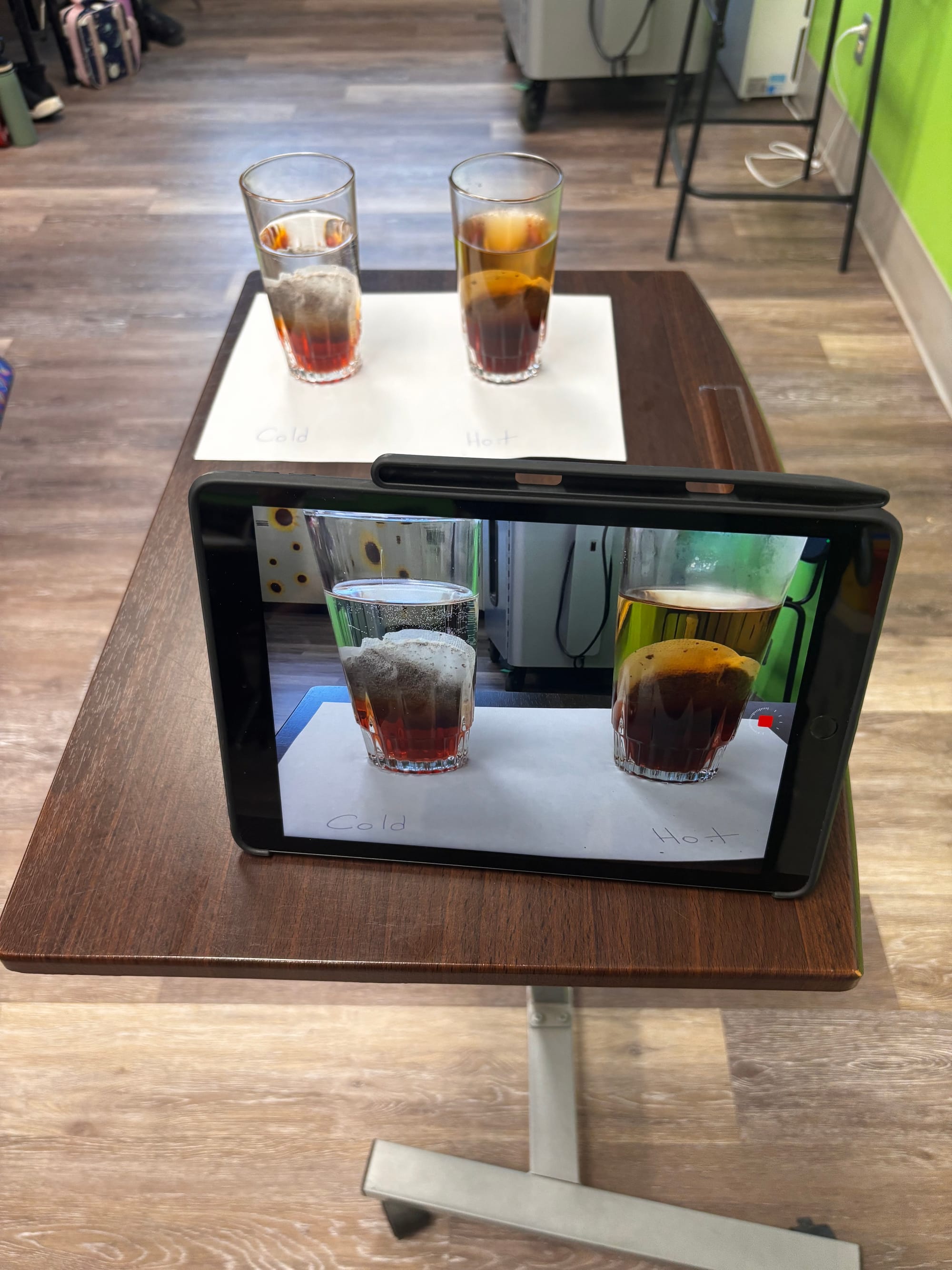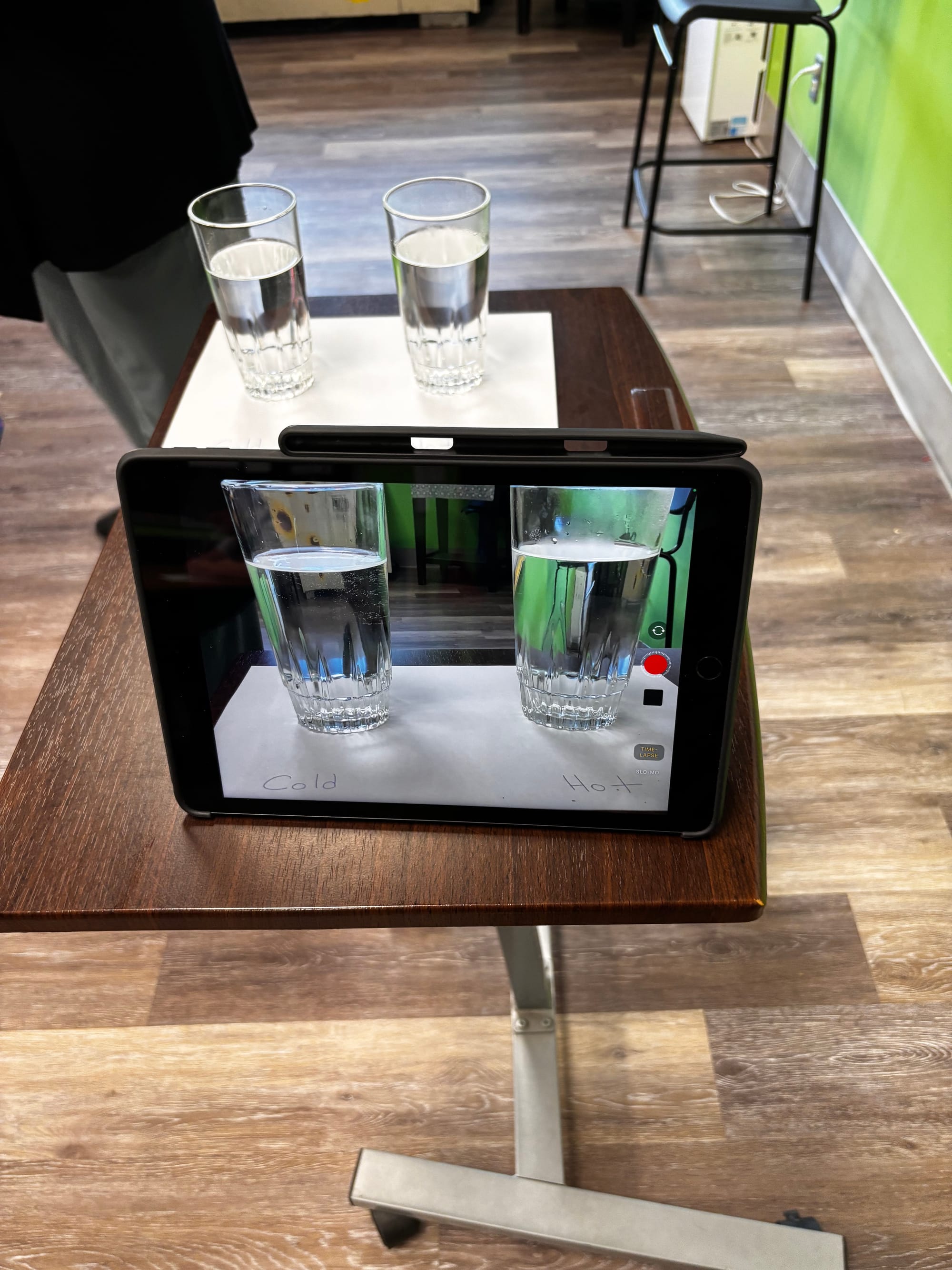When Alice mentioned that her Grade 3 class was studying energy and motion through a simple tea experiment, it felt like the perfect opportunity to introduce a new idea: Time-Lapse Experiments!
A Simple Setup with Big Impact 🤯
The experiment itself was straightforward: students observed two cups of water—one hot, one cold—as a tea bag brewed in each. Over the course of six minutes, they drew pictures and took notes on the changes they saw. Sounds simple, right? But watching the tea swirl and diffuse at different speeds turned out to be surprisingly riveting!


Side-by-Side Science: Hot vs. Cold… which tea wins the diffusion race?
The students took their time analyzing the shifting colors, debating which pencil crayons best captured the difference in intensity between the two cups. And we added one small twist: an iPad recording the entire process in time-lapse mode.
Making Science Visible 🧑🔬
Since half the class was in another room at first, we ran the experiment twice—once for each group—and recorded both. Afterward, we imported the videos into Google Drive, placed them side by side in a slide deck, and handed them off to Alice for follow-up discussions the next day.
The results? The videos are REALLY GOOD! Having a time-lapse video allowed the students to revisit their observations, compare differences between the two trials, and even brainstorm how they might tweak the experiment for a third round.
Tea in Motion: The most dramatic brewing you’ve ever seen (according to our time-lapse).
Observations on Observation 👀
Alice noted an interesting phenomenon: one group was significantly more observant than the other. It seemed that without an engaging kickoff or a structured thinking prompt, some students took longer to grasp what they were supposed to be noticing.
That’s when I thought of Project Zero’s thinking routines, a powerful set of tools designed to help students slow down and engage deeply with what they’re seeing. I shared these three with Alice:
- 🔍 Creative Comparisons – Encourages students to compare and contrast observations in creative ways.
- 💭 I Used to Think… Now I Think… – Helps students reflect on how their thinking has changed over time.
- 🎨 Colors, Shapes, Lines – A visual thinking routine that prompts students to analyze patterns and movement in what they see.
These routines could really help students engage more fully with their observations in future experiments.
What’s Next? 🧗
With two solid rounds of experiments recorded and a new approach to guiding student observations, Alice now has the tools to refine and deepen the learning process. Next time, with a stronger launch and structured reflection prompts, we’re excited to see how students engage even more deeply with the science of energy and motion.
The Opposite of Time-Lapse? Slow Motion!
After that sped-up tea experience, let’s take a breath and slow things way down. Time-lapse helps students observe change over time—but what happens when we flip it? Slow motion stretches time out, revealing details we’d normally miss.
Check out this clip from of fast moving hummingbirds in slo-mo from BBC Earth.

